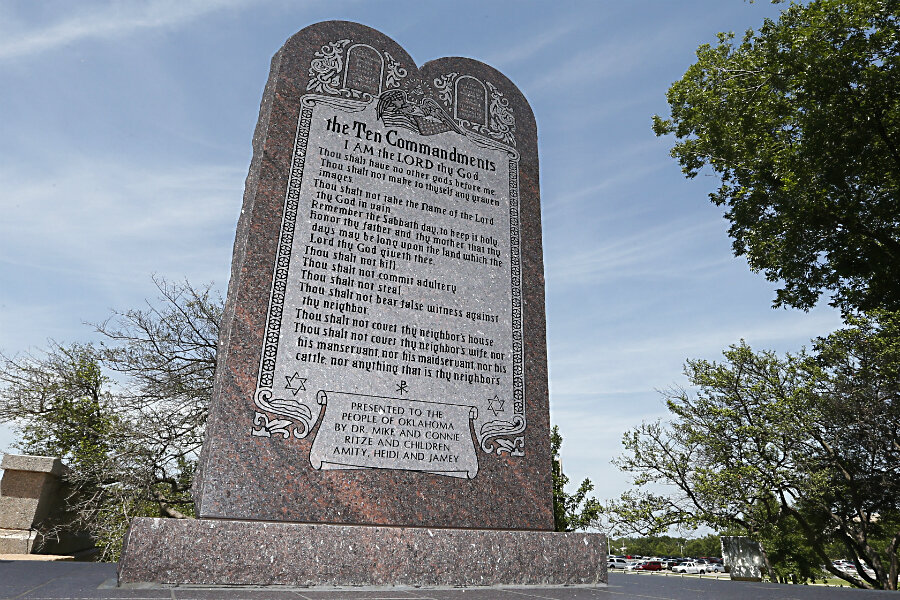Okla. officials vote to remove Ten Commandments from courthouse
Loading...
Oklahoma’s embattled Ten Commandments monument must be taken down by Oct. 12.
Oklahoma state officials voted Tuesday to remove the Ten Commandments monument from the grounds of the State Capitol to comply with a court order.
The Capitol Preservation Commission, which manages the placement of artwork on public property, voted 7-1 to remove the one-ton granite statue, built with private dollars.
The decision to remove the monument follows months of intense debate, with critics arguing that it violates the state constitution's prohibition against using public property to support religion Supporters had argued it serves a historical purpose.
Three plaintiffs represented by the American Civil Liberties Union brought suit challenging its placement on state property. As The Christian Science Monitor reported, early this summer Oklahoma’s Supreme Court ordered its removal citing that the monument indirectly benefits the Jewish and Christian faiths.
The 7-1 state Supreme Court decision cited a clause in the Oklahoma Constitution that states: "No public money or property shall ever be appropriated, applied, donated, or used, directly or indirectly, for the use, benefit, or support of any sect, church, denomination, or system of religion, or for the use, benefit, or support of any priest, preacher, minister, or other religious teacher or dignitary, or sectarian institution as such."
The Supreme Court directed a district court to issue an order to comply. On September 11, Oklahoma County District Judge Thomas Prince gave the state 30 days to remove the monument, according to the Associated Press.
John Estus, a spokesman for the Office of Management and Enterprise Services, told the AP that it was unclear where the statue will go, or what day it will depart.
“We're going to meet with the builder who installed it and figure out the best way to remove it," Estus said.
The monument – a six-foot-tall, three-feet-wide slab of stone shaped like two tablets – was installed in November 2012, three years after a bill authorizing it was passed by the Republican-controlled state legislature and signed into law by then-Gov. Brad Henry (D), and was paid for with private funds through Rep. Mike Ritze, (R) of Broken Arrow, Okla..
In October 2014, the monument was damaged when a man drove a car across the Capitol lawn and crashed into it. The monument was replaced early this year with an exact replica commissioned by Representative Ritze’s family.
While the Oklahoma statue stood at the capitol, other groups also asked to erect their own monuments on the capitol grounds, including Satanists, an animal rights group, and the "Church of the Flying Spaghetti Monster."







